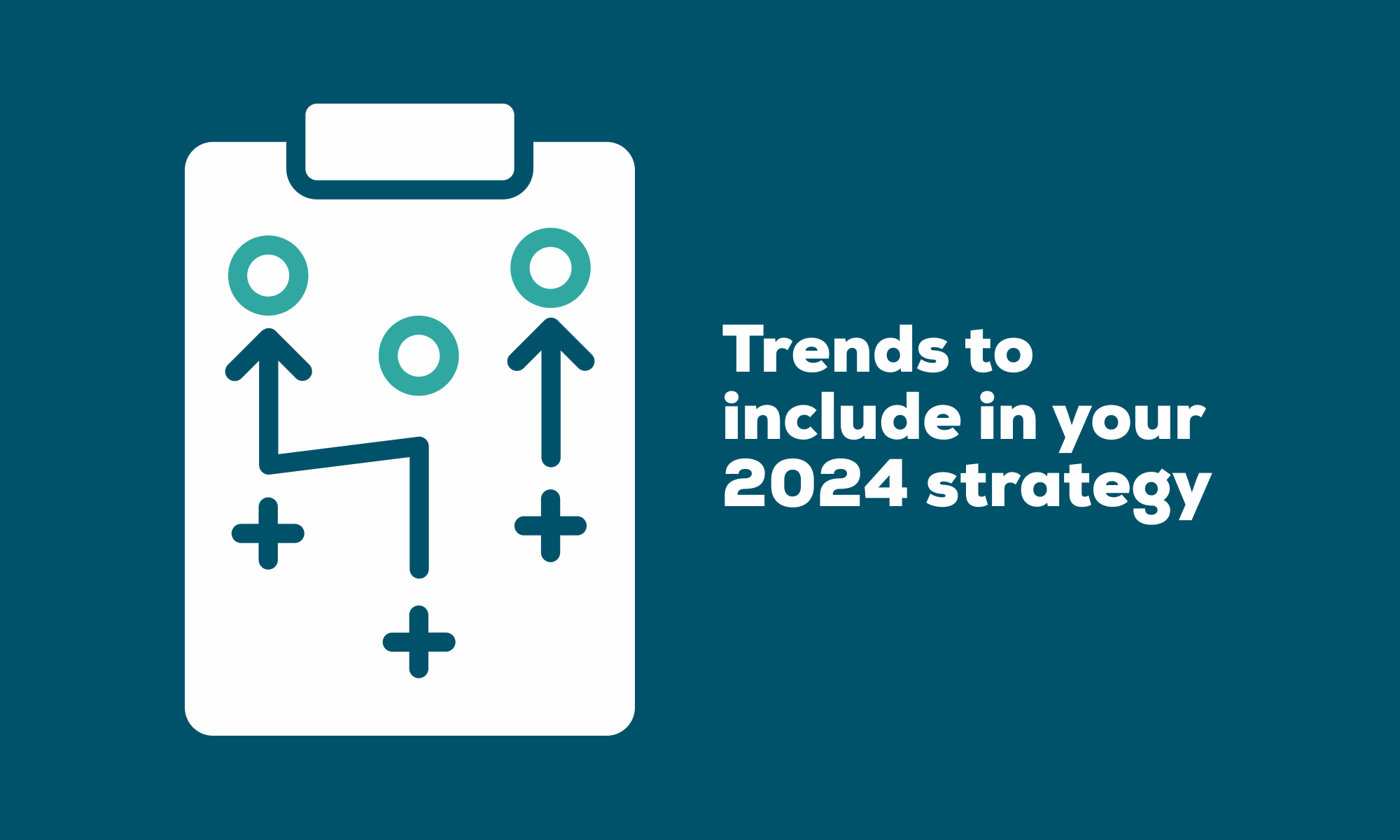So, you’ve decided to switch your digital agency. Even though deciding to switch can be difficult, sometimes the transition from your previous agency to your new one can be even more challenging. You have to make sure your new agency can meet your business goals, start to build an agency and client relationship, and transition all of your previous agency's work to your new one. We know how intimidating it can feel! That’s why we’re here to ensure you have the smoothest transition process possible by helping you understand and minimize the potential risks of the transition process. The goal is for you to leave this blog post feeling more confident heading into the transition and come out with more positive impacts on your organization without any surprises or negative impacts.
You’ve decided to change your agency; now what challenges should you expect along the journey?
This part of the journey to finding the perfect digital agency is usually the most stressful, but we’re here to help. Here are the main challenges you’ll face when switching to a new digital agency.
1. Identifying your new digital agency
The main thing businesses tend to focus on is making the right announcement and when to make a perfectly timed announcement that won’t have a negative impact on the transition to their new agency. Usually, you start thinking about this as soon as they begin exploring the possibility of a new agency. This starts when their current agency has given them signs it’s time to change; maybe they’ve changed their behavior or aren’t working as effectively as you expect, which puts your business in danger.
So, the first step, before thinking about your announcement, is finding the right digital agency. Of course, that’s easier said than done! There’s a lot to consider here, your expectations, the agency’s abilities, and making sure they fit with your business and culture. Ok, maybe we’re making this sound even more intimidating than it is, switching agencies doesn’t have to be scary! As long as you go into things with a solid game plan and expectations in line, you can ensure that you’re not wasting your time, money, and energy and choose the right agency from the jump. This article about “how to choose the best web agency for your business” might help you to decide better. It’s also important to know the common blind spots when choosing a new agency in order to avoid them.
2. Determining your expectations
So, you know that having a game plan is essential when choosing your new agency. However, even after choosing that agency, it’s important to keep your expectations in mind throughout the transition process. You need to be clear about your expectations with your new agency from the beginning. Not having your expectations on the table is the perfect way to get right back to where you were before having the same experience as you did with your previous agency and needing to switch again. You need to define everything for yourself and your new agency. If your new agency doesn’t have a clear understanding of what you expect from them, how are they supposed to deliver it? It’s like sending someone to get you coffee without telling them your order; you can’t be mad when it comes back wrong!
3. Simplifying the transition process
As soon as you tell your current agency that you’re switching to a new one, they may become more unresponsive and lose some of that communication level you’ve gotten from them before. So, it’s important to make sure it’s as easy as possible for the old agency to transfer all your information, documents, and access to the new agency. Switching your agency doesn’t mean destroying your relationship with the old one; you don’t want to burn those bridges; you might need them. It may be a good idea to let them know with some prep time that you plan on switching to this new agency so they can begin preparing your information without a big rush on it; that’s how things get missed. As the business owner, you need to ensure the old agency is proactive and cooperative about sending your information to the new agency.
4. Taking over someone else work can be challenging
Keep in mind that this new agency is starting from almost zero. They don’t know your business and your expectations automatically. You need to prepare yourself for this challenge and not expect immediate results; it’s not as simple as clicking a button and being done with it. Your new agency needs time to get to know your business, your website, your objectives, and where you currently stand.
But this challenge isn’t all on the new agency; it’s also on you to help them through that process! They can’t learn everything about you from data and searches. You need to fill them in and help them get to where they need to be so you can start working together towards your goals. The goal here is to start the relationship on the right foot, where both of you can work together toward achieving your goals.
How to ensure a smooth transition?
1. Find an agency that has experience with transitions
If you’re especially worried about the transition process, it’s a good idea to be more cautious when selecting your digital agency and consider the team’s experience managing transitions. Have they done a similar transition before? Are they aware of the steps and know exactly what to do? It’s easy for an agency to say “yeah, we can totally take this over, no problem!” but if they don’t have the experience, there are likely problems in your future. So, you need to ask your potential agencies for validations, what specific experience with transitions do they have? By finding an agency that has the experience, you can set yourself up for a smooth transition process. If a team has gone through this process before, it’s going to take less time and effort on your part and theirs, which means an overall easier, faster, and smoother transition.
2. Clarify the takeover process
Communication is the key to ensuring a smooth transition. You have to ensure you have clear communication with your old and new agencies. Again it comes down to communicating your expectations, if you’re not clear about your expectations and your agency isn’t clear about what they need for their process, how can you expect to both be satisfied and get what you need to be done? If you chose an agency that has previous transition experience, they may even have a “takeover package” or a “transition package.” This can help you understand what the agency will do step-by-step and what they expect from you during the process. One thing you should do during this step is to ask for an audit, which may already be included in the transition package if they have one, and that audit will give you a ton of insight into your website.
A fresh website audit can tell you the following:
- How your site is performing
- What you can do to improve it
- What needs to be changed to improve your site
- If your website is properly optimized for SEO
- How is your website’s user experience (UX)
- If it’s accessible
If you’re unclear about any steps of the process, ask questions and get the clarification you need. There shouldn’t be anything left up in the air, everything needs to be clarified in order to have a smooth transition.
3. Get some proactive insight
You’ve just partnered with a new agency starting from zero with your business. What you might not realize is that this is a great opportunity for some fresh insight! They’re a new set of eyes that can offer a different perspective when it comes to your business. Take advantage of your new agency's new perspective and get some insight and advice. They have experience in the business and have seen every mistake in the book, and fixed it, so see if they have any recommendations. It’s important to work with an agency that’s able to help you move forward and improve over time.
Our tips for ensuring smooth and successful transitions
In the past 5 years, we’ve done over 25 transition or takeover projects. So, it’s safe to say we know exactly what this process looks like and what needs to be done for a successful, smooth transition.
So, here’s our expert advice.
We Over-communicate With Our Clients
One of our core values at Symetris is transparency; we’re always transparent about our projects, the process, and everything related to the project with our clients. Before the takeover even starts, we work with the client to clarify their situation, their expectations, their overall goals and KPIs, and we get familiar with their business. More importantly, we get them caught up and familiar with what we do at Symetris and the methods and techniques we’ll use throughout the transition process, the time expected for each step, and what comes after the transition, on top of providing weekly reports to help everyone stay organized and in the loop. We make sure that everything is clear and that both sides know what to expect with weekly calls and kickoff meetings with the clients.
We Follow A Documented Takeover Process
After getting everyone’s expectations in order, we send a document to the client and ask them to give us as much information as they can, either on their own or with the help of their previous agency. This information includes technical information like required access, infrastructure, website hosting, etc. By doing this all before we begin the takeover, we’re not left in the dark or starting from scratch when we take over.
We Dig Deep into the Document and Scan the Code
After we get that document and all the required information from the clients, our expert developers dig in and evaluate the document and the codes. This part of the process allows us to build a better understanding of what’s going on in the business infrastructure and the website, and what’s happening deeper under the surface. Most of the time, we get everything we need from the original document, but sometimes we have some unanswered questions that we need to find the answers to.
We Always Try to Find the Solution
If we can’t find the answer from the document or the client, we let the client know that we’ll get in touch with their previous agency to get the necessary information. All of this extra work and communication ensures that we’re making the transition as easy as possible for our clients. We’re always looking to find the best solutions with the least amount of effort required from our clients. That’s why we make sure we’re always up for any challenges we might encounter. We take on the responsibility of answering those questions and recommending what we think is best for our clients, and we really mean it!
For example, we were recently tasked with re-building a client's website after taking over the project from a previous agency, we communicated with the previous agency and the developer who built the website. The issue at hand was we didn’t want to move and change their website hosting because it would be a waste of money for the client in the long run. So, we took a step forward and found a solution: we managed and negotiated with the previous agency to keep the same host and save our client some money.
After all is said and done, we do what most agencies don’t do, create a final report and our own documentation summing up the takeover process. We provide a report for the clients and make proactive recommendations.
How Long Does it Take to Takeover?
This question doesn’t have a solid answer, it depends on the project type. At Symetris, we have 3 types of takeover projects.
1. Minimal Audit
This project takes around 4-6 weeks. It includes the initial planning, technical takeover, functional analysis and quality management planning.
2. Standard Technical Audit
This mid-range project takes around 6-8 weeks. It includes the same steps as above, plus strategic analysis and technological roadmapping.
3. Technical and Strategic Audit
This is the most comprehensive package we offer, and it takes around 8-10 weeks. It includes all the technical audits, strategic contextualization, and evolution roadmap.
Are you ready to begin the transition process today? Get in touch with us to get started!


